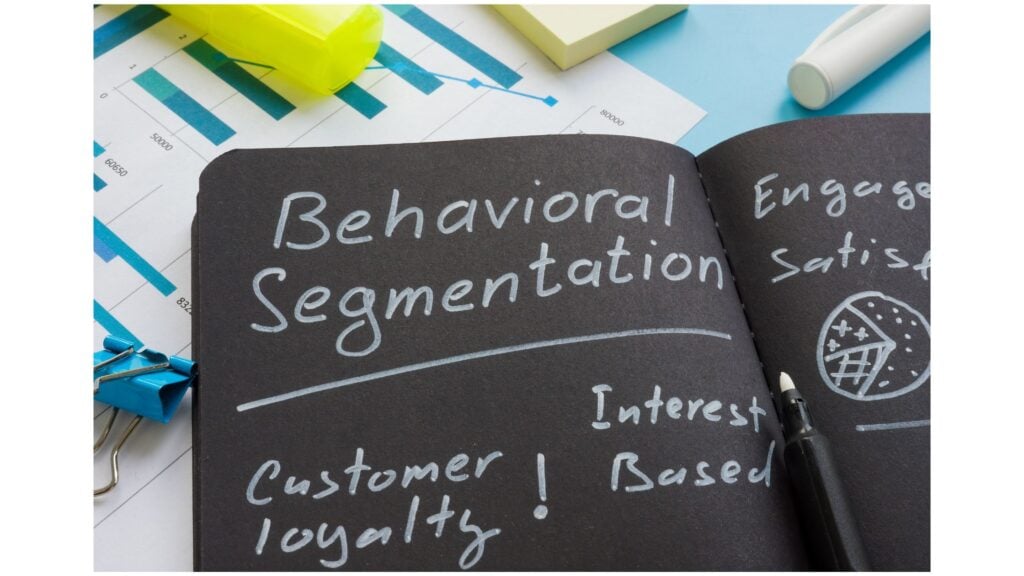Time Travel Therapy: Understanding Dementia Patients’ Responses to Reminiscence Experiences
Time travel therapy: understanding dementia patients’ responses to reminiscence experiences
When individuals with dementia engage in therapeutic time travel experiences — whether through virtual reality, reminiscence therapy, or immersive environmental recreations — they oftentimes demonstrate fascinating and sometimes unexpected responses. These experiences can moment bridge the gap between present confusion and past clarity, offer valuable insights for both medical professionals and family caregivers.
What are therapeutic time travel experiences?
Therapeutic time travel for dementia patients doesn’t involve actual time machines but kinda cautiously design environments and experiences that recreate elements from a person’s past. These might include:
- Reminiscence therapy use photographs, music, and personal objects
- Virtual reality simulations of familiar locations from earlier decades
- Recreated environments like 1950s diners or vintage live rooms
- Sensory experiences feature familiar scents, sounds, and textures
- Interactive storyteller sessions about historical events from their youth
These approaches aim to transport individuals backward to times when their memories were intact, potentially unlock cognitive and emotional responses that are typically difficult to access.
Emotional responses during time travel experiences
Among the virtually striking observations during therapeutic time travel are the emotional responses exhibit by dementia patients. These oftentimes include:
Sudden clarity and recognition
Many caregivers report moments of startle lucidity when patients encounter stimuli from their past. A person who struggle to recognize family members might abruptly name childhood friends in an old photograph or recall detailed stories about their first job when place in a setting reminiscent of that era.
This phenomenon, sometimes call” time shifting, ” ccur when patients mentally relocate to an earlier period in their lives where memories remain more accessible. During these episodes, individuals may speak more fluently, demonstrate improve vocabulary, and maintain longer conversations than they typically can in their current state.
Emotional release
Time travel experiences oftentimes trigger powerful emotional responses. Patients may express joy and laughter when reconnect with happy memories, or they might process grief and sadness that had been lock forth. These emotional releases can be therapeutic, allow individuals to express feelings they can not differently articulate.
For example, play music from a person’s young adulthood might prompt spontaneous singing or dancing from someone who has been withdrawn ornon-verball. Likewise, handle objects from their past profession might trigger muscle memory and professional pride.
Reduced agitation and anxiety
One of the virtually beneficial outcomes observe during time travel therapy is a noticeable decrease in agitation, wander behaviors, and anxiety. When surround by familiar elements from their past, many patients demonstrate improved mood and reduce stress levels.
This calm effect oftentimes extend beyond the therapy session itself, with some studies show decrease need for antianxiety medications follow regular reminiscence therapy. The comfort of familiarity pprovidesa sense of security that contemporary environments, which may feel strange and confusing, can not offer.
Cognitive patterns and memory access
Time travel experiences reveal fascinating patterns in how memory functions within the dementia affect brain:
Preserve procedural memory
While recent events may be impossible to recall, procedural memories — those involve learn skills and routines — oftentimes remain accessible. During time travel experiences, patients might demonstrate abilities that caregivers didn’t realize they tranquilize possess:
- A former mechanic might right identify and” repair ” arts of a vintage car
- A homemaker might mechanically begin fold laundry when present with the familiar task
- A musician might play remember melodies despite being unable to name the songs
These moments reveal how deep ingrained certain memories remain, evening as others fade. They suggest that the brain retain more function than daily interactions might indicate.
Temporal confusion
During time travel experiences, many patients demonstrate temporal disorientation that differ from their usual confusion. They may believe they’re really live in the past era being simulated, ask about peopleforesightl deceased or express concern about responsibilities from decades agalone
While this might seem concern, many dementia specialists consider this a positive sign of engagement kinda than a negative side effect. The person is connected with memories and identity in a meaningful way, eventide if their timeline is confused.
Selective memory enhancement
Certain sensory triggers prove signally effective at unlock specific memory categories. Scents, in particular, demonstrate powerful effects due to the close neurological connection between the olfactory system and the hippocampus, a brain region central to memory formation.
For instance, the smell of particular spices might trigger detailed recollections of family cooking traditions, while the scent of motor oil could unlock memories of a first car or workshop. These sensory keys can open doors to memories that seem differently inaccessible.
Communication patterns
The way dementia patients communicate during time travel experiences oftentimes differ importantly from their day-to-day interactions:

Source: dolancare.com
Increased verbal fluency
Many patients demonstrate improved speech patterns when discuss topics from their past. Vocabulary expand, sentence structure become more complex, and word find difficulties may temporarily diminish. This suggests that language skills remain partly intact but become difficult to access without appropriate contextual cues.
Family members oftentimes report feel like they’re” get rearward ” heir loloved oneuring these moments, as personality traits and communication styles from before the dementia progression briefly resurface.
Narrative coherence
While day to day conversations might be fragmented or circular, many patients can tell unusually coherent stories about past events during time travel therapy. The narrative structure of these memories oftentimes remain intact yet when other cognitive functions have decline.

Source: remedic.co
This preserve ability to share life stories represent an important avenue for maintain identity and connection, allow patients to temporarily step out of the confusion of dementia and into the role of storyteller and history keeper.
Non-verbal communication
Body language frequently change dramatically during these experiences. Patients may demonstrate more animate facial expressions, improve posture, and more purposeful gestures. Yet those with advanced dementia who have limit verbal abilities may show increase non-verbal engagement through eye contact, touch, and emotional expressions.
These non-verbal cues provide valuable windows into inner experiences that patients can not articulate, help caregivers intimately understand their emotional states and needs.
Social interactions and relationship recognition
Time travel experiences oftentimes reveal fascinating patterns in how dementia affect social cognition and relationship memory:
Emotional memory of relationships
While a patient might not recognize a spouse or child by name or appearance, they oftentimes retain emotional memories of significant relationships. During time travel experiences, this emotional recognition may temporarily align with factual recognition, allow for meaningful connections.
For example, a woman might not recognize her daughter in the present but can right identify her in photographs from decades alone and share stories about her childhood. The emotional bond persist yet when factual details become confused.
Role resumption
Many patients temporarily resume social roles from their past during these experiences. A former teacher might course begin instruct others, a parent might demonstrate nurture behaviors toward dolls or younger participants, or a host might offer hospitality to visitors in a recreation living room set.
These role resumptions demonstrate how deep social identities are embedded in memory and personality, frequently survive level when other aspects of self awareness hadiminishedish.
Community recognition
While individual faces might become unrecognizable, many patients retain strong memories of community structures and social contexts. During time travel experiences, they might accurately describe neighborhood layouts, community traditions, or workplace hierarchies from decades yesteryear.
This suggests that social mapping — understand one’s place within larger social structures — remain part intact level as individual relationship recognition deteriorate.
Physical responses and embodied memory
The body oftentimes remember what the mind has forgotten, as evidence by physical responses during time travel therapy:
Improved motor function
Many caregivers report temporary improvements in coordination, gait, and purposeful movement during immersive reminiscence experiences. A person who unremarkably shuffles might demonstrate a stronger stride when walk through a space design to resemble a familiar setting from their youth.
These improvements suggest that physical limitations may be partly cognitive sooner than totally physical — when the brain access memories of movement from times before mobility issues, the body can temporarily follow suit.
Muscle memory activation
Provide tools or objects from a person’s past occupation or hobbies oftentimes trigger remarkable displays of preserve skill. Hands that struggle with everyday tasks might demonstrate dexterity when give knitting needles, carpentry tools, or musical instruments that were erstwhile familiar.
These moments of competence provide dignity and a sense of identity that can importantly improve quality of life and self perception.
Sensory engagement
Patients oftentimes demonstrate heighten sensory awareness during time travel experiences. They may notice details in their environment that typically go unremarked, respond more promptly to touch, or show increase appreciation for music, flavors, and scents associate with their past.
This enhanced sensory engagement suggest that perceptual abilities remain more intact than might be apparent in everyday settings where sensory input may seem meaningless without contextual memory.
Practical applications for caregivers
The observations gather during therapeutic time travel experiences offer valuable insights for everyday dementia care:
Create memory anchors
Understand which time periods and sensory experiences trigger positive responses allow caregivers to create” memory anchors ” n everyday environments. These might include:
- Photographs from significant life periods display conspicuously
- Background music from the person’s young adulthood
- Familiar scents incorporate into daily routines
- Tactile objects that connect to past hobbies or work
These anchors can help orient patients and provide comfort during transitions or moments of increase confusion.
Communication bridges
When conventional conversations become difficult, topics from a person’s past oftentimes remain accessible. Caregivers can use this knowledge to maintain meaningful communication by:
- Ask about specific historical events the person experience
- Inquire about their expertise in former professions
- Share reminiscence activities as regular parts of care routines
- Use terminology and references from their formative decades
These approaches acknowledge the person’s full life history quite than focus entirely on their current limitations.
Dignity through competence
Time travel experiences reveal areas where patients retain abilities and knowledge. Caregivers can incorporate these islands of competence into daily life by:
- Provide opportunities to demonstrate preserve skills
- Create modify versions of former hobbies that accommodate current abilities
- Acknowledge and respect areas of expertise from their past
- Designing environments that support independence in areas of retain function
These approaches help maintain self-esteem and quality of life level as other abilities decline.
Ethical considerations
While therapeutic time travel offer many benefits, it likewise raises important ethical questions:
Truth vs. Comfort
When a patient believes they’re live in the past, caregivers face difficult decisions about whether to correct misconceptions or participate in their reality. Most dementia care specialists nowadays recommen” therapeutic fibbing” or validation therapy approaches that prioritize emotional comfort over factual accuracy.
This might mean answer questions about deceased love ones as if they were inactive alive or participate in discussions about long past events as though they were current. While this feel uncomfortable to many caregivers initially, research suggest it cause less distress than repeatedly confront patients with potentially traumatic truths they can not retain.
Identity continuity
Time travel experiences raise profound questions about personal identity and continuity of self. They demonstrate that while dementia disrupt memory and cognitive function, core aspects of personality, emotional connections, and life narrative frequently persist in some form.
This understanding challenge simplistic views of dementia as erase the person and encourage approaches that recognize and support continue personhood still as cognitive abilities change.
Conclusion: the map of memory
Therapeutic time travel experiences with dementia patients reveal that memory loss isn’t plainly a uniform erasure but kinda a complex remapping of accessibility. Some memories become inaccessible while others remain retrievable with the right keys — oftentimes sensory or emotional triggers connect to significant life periods.
Understand these patterns help caregivers develop more effective approaches to communication, environmental design, and activity planning. More significantly, it offers hope that meaningful connection remain possible still in advanced stages of dementia, axerophthol recollective as we’re willing to journey into the past to meet love ones where their memories tranquilize live.
These journeys through time don’t change the progression of dementia, but they can transform our understanding of what remain possible within its constraints. They remind us that behind confusion and cognitive changes, the essential person persist — with a lifetime of experiences that continue to shape their responses to the world, level when those connections are nobelium recollective consciously accessible.



